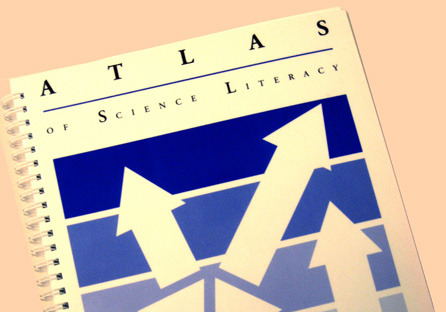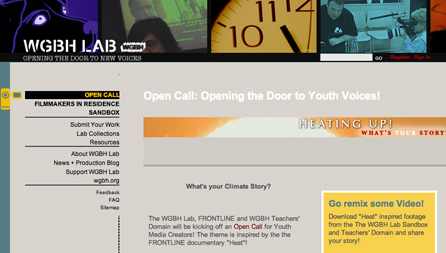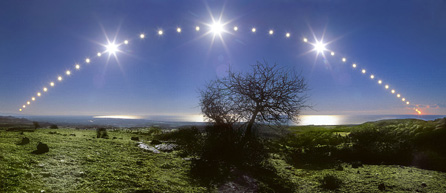The Engineering Pathway (EP) has launched an Engineering and Computing Education news service–a continuous feed of user-submitted items, featured on the EP homepage, parsed by discipline and displayed on EP disciplinary community pages. The entire feed is available on the News in Engineering Education page. All registered users of Engineering Pathway are invited to submit current news related to Engineering, Computing and Technology Education. The EP news feed can be included on your site, too! Learn more about personalized news and other services offered by the Engineering Pathway.
Highlights are weekly information nuggets that are published at http://NSDL.org. Topics include information about new library resources, as well as stories about discoveries, events, activities and current news. The Highights archive may be found at http://NSDL.org/index.php?highlight_archive=1.
Contributors:
One-stop Engineering Education News Service
Monday, January 12th, 2009 2:45 pm
Contributed by: Carol Minton Morris
“Science Friday” All Week Long
Monday, January 5th, 2009 12:54 pm
Contributed by: Carol Minton Morris
Every Friday NPR radio talk show host Ira Flatow brings listeners interesting and sometimes surprising science tidbits on Science Friday. The show airs at 2:00 p.m. EDT, but can also be heard online anytime. This week’s offerings include Mystified, Solve it With Science, a look at a new book, 65 Short Mysteries You Solve With Science. Billy Moses, fifth grader, Washington, D.C. offered this review, “Amazing, mind-bending tales so interesting you don’t even realize you are learning. I couldn’t stop reading this book.” Teachers can find resources mentioned in Science Friday broadcasts related to McREL content standards and benchmarks on the Science Friday Science Connection web site.
Science Naturally is a publisher of books committed to increasing science literacy that focuses on grades 4-8, families and educators. One Minute Mysteries: 65 Short Mysteries You Solve with Science is recommended for grades 4-8, but is also intended for anyone who is interested in the ways that science affects daily life. The Science Naturally web site features free hands-on learning activities such as the “If My Mom Were a Platypus” learning guide.
Posted in Topics: Chemistry, Education, Engineering, Mathematics, Physics, Science, Social Studies, Technology
NSDL Resources Highlight Solstice Science and Math
Tuesday, December 16th, 2008 12:21 pm
Contributed by: Carol Minton Morris
Winter officially begins during the third week of each December in North America. This calendar event known as the solstice is marked as the sun briefly “stands still” as its position in the sky reaches the greatest distance from the earth. This celestial alignment is experienced as the shortest day of the year by people in the northern hemisphere as they rush about making holiday preparations. Many cultures celebrate the winter solstice with community gatherings that ritually create more light and warmth during the longest night.
This photograph of the “Tyrrhenian Sea and Solstice Sky” by Danilo Pivato was featured in Astronomy Picture of the Day: “This stiking composite image follows the Sun’s path through the December Solstice day of 2005 in a beautiful blue sky, looking down the Tyrrhenian Sea coast from Santa Severa toward Fiumicino, Italy. The view covers about 115 degrees in 43 separate, well-planned exposures from sunrise to sunset.” Used with permission © Danilo Pivato, 2005, All rights reserved.
The following NSDL resources are designed to shed light on solstice math and science:
From PRISMS: Phenomena & Representations for Instruction of Science in Middle Schools
Earth-Sun Geometry: Winter Solstice Animation
This representation depicts the position of the Earth relative to the Sun during the southern hemisphere’s winter solstice and includes line of latitude and the angle of the Sun’s rays at the Tropic of Capricorn. More information here.
From NSDL Engineering Pathway partner TeachEngineering: Resources for K12
Students will investigate the accuracy of sundials and the discrepancy that lies between “real time” and “clock time”. They will track the position of the sun over the course of a relatively short period of time as they make a shadow plot, a horizontal sundial, and a diptych sundial. More information here.
—
From the NSDL Middle School Portal: A direct path to selective online resources for instruction and professional development from the National Science Digital Library
The Reason for the Seasons
Understanding why the earth has seasons is one of the most difficult concepts for middle school students to understand. This publication provides resources to help teachers uncover their students misconceptions about the seasons. More information here.
—
From the GLOBE Program:Global Learning and Observations to Benefit the Environment, and DLESE: Digital Library for Earth System Education
Modeling the Reasons for Seasonal Change
The purpose of this resource is to understand what causes the Earth’s seasons with a focus on the Earth’s tilt and spherical shape. Students learn how sunlight spreads over the Earth at different times of the year, emphasizing the solstices and the equinoxes. More information here.
—
From ComPADRE: NSDL Physics and Astronomy Pathway
These web pages provide a short overview of the common (Gregorian) calendar and some less-common ones–Julian, Jewish (leap months), Moslem, Persian (New Year on the spring equinox), Ethiopian and Maya. More information here.
Posted in Topics: Chemistry, Education, Engineering, Mathematics, Physics, Science, Social Studies, Technology, multimedia
Teachers Test NSDL’s Science Literacy Maps
Monday, December 8th, 2008 3:34 pm
Contributed by: Carol Minton Morris
NSTA’s Science Scope is a peer-reviewed journal for middle level and junior high school science teachers. In the November 2008 issue authors Kerri Richardson, Catherine Matthews and Catherine Thompson offered on-the-ground insights into why proportional reasoning is particularly important for middle school teachers to understand in order to instruct their students in developing inquiry skills. Their article, “Linking Proportionality Across the Science and Mathematics Curricula Through Science Literacy Maps” takes a look at the powerful combination of high quality National Science Digital Library (NSDL) resources delivered through information and concepts represented in Science Literacy Maps as a way “to help students construct their own meaning.”
 The strand maps developed by Project 2061 at the American Association for the Advancement of Science and published in the Atlas of Science Literacy, Volumes 1 and 2 (2001 and 2007, AAAS Project 2061 and the National Science Teachers Association) are also available as large format books.
The strand maps developed by Project 2061 at the American Association for the Advancement of Science and published in the Atlas of Science Literacy, Volumes 1 and 2 (2001 and 2007, AAAS Project 2061 and the National Science Teachers Association) are also available as large format books.
The knowledge system that underlies NSDL’s Science Literacy Map Tool is the Atlas of Science Literacy maps that have been published by the American Association for the Advancement of Science (AAAS) and Project 2061. The article describes the Atlas and the NSDL-developed Science Literacy Map Tool as a way for teachers to understand science literacy and to align instruction with state and national standards.
The authors asked 50 middle school teachers to complete tasks and present their findings. After completing a set of 8 tasks related to thematic mathematical concepts represented on maps the group concluded that the content and process were a good match in finding appropriate resources for use in instruction. One teacher group reported, “[the science literacy maps] put it together in a big picture for us and gave us new meaning.”
The full article is available through the NSTA web site. NSTA members may access it for free. Cost to nonmembers is .99: http://www.nsta.org/store/product_detail.aspx?id=10.2505/4/ss08_032_03_64.
Posted in Topics: Chemistry, Education, Engineering, Interactive, Mathematics, Physics, Science, Social Studies, Strand maps, Technology, multimedia
WGBH Teachers’ Domain Reaches Out to Student Video Producers and Makes Media More Accessible
Monday, December 1st, 2008 2:53 pm
Contributed by: Carol Minton Morris
“Youth Voices” is an open call from WGBH Teachers’ Domain for ideas from 13-18 year olds who would like to produce video segments about climate change. “Youth Voices” will kick off in January, with a series of three informative webinars for student filmmakers. To find out more check out WGBH Lab for details. Teachers’ Domain is also working to create science curriculum units that are accessible to blind and low-vision students.
 The WGBH Lab web site. Follow the WGBH Lab Twitter feed for up-to-date news and information.
The WGBH Lab web site. Follow the WGBH Lab Twitter feed for up-to-date news and information.
How do you teach a blind child about the wonders of the solar system? Or the anatomy of a frog? Thanks to funding from the National Science Foundation’s Research in Disabilities Program and additional funding from The Grousbeck Family Foundation, WGBH’s National Center for Accessible Media (NCAM) worked with the Perkins School for the Blind in Watertown, Massachusetts to create science curriculum units that are accessible to blind and low-vision students.
Teachers’ Domain asked Veteran Perkins instructor Becky Hoffman who wanted science to come alive for her students: How will Teachers’ Domain resources help your students? And how do you plan on using them in your classroom?
Hoffman responded: “One of my most time-consuming jobs is reformatting materials, so being able to turn to the Teachers’ Domain website for accessible lesson plans will leave more time for teaching-a definite plus. I am also hopeful that other teachers of the visually impaired will find the modifications and suggestions helpful for their students.”
“We feel that science should provide our students with concrete, functional lessons that they can relate to on a personal level, Hoffman adds. “Subjects such as growth and development, the weather, life cycles of plants and animals, nutrition, our bodies, basically things that affects their lives, are good topics to explore with our students. Teachers Domain covers these topics and with modifications and suggestions, we can use the website to enrich our science program.”
Teachers’ Domain hopes that these developments will enable teachers of the visually impaired across the world to make science come alive for their students.
Posted in Topics: Education, Mathematics, Science, Social Studies, Technology, multimedia
Bountiful Thanksgiving Resources from NSDL
Monday, November 24th, 2008 6:13 pm
Contributed by: Carol Minton Morris
Expressing gratitude for home, family and tradition is a yearly ritual in many communities nationwide. These timely STEM resources from the NSDL community present health issues related to the amount, type and even the aromas of the foods we eat as well as one significant computational aspect of this all-American holiday celebration.
A traditional roast turkey leg. © 2004 Carol Minton Morris
From the Directory of Open Access Journal, BioMed Central, and PubMed Central
The effect of the Thanksgiving Holiday on weight gain
More people than ever are considered obese and the resulting health problems are evident. These facts highlight the need for identification of critical time periods for weight gain. Therefore the purpose was to assess potential changes that occur in body weight during the Thanksgiving holiday break in college students.
From the Internet Scout Project
Thanksgiving Biology Topic in Depth
These eight resources focused on the biology of our favorite Thanksgiving foods include (1) a short, readable introduction to the biology and natural history of wild turkeys in the US. Wild, or domesticated, turkey meat known for its soporific power. Visitors to the Web site from International Anti-aging Systems (2) can learn all about tryptophan, the amino acid responsible for the post-Thanksgiving dinner nap. The third Web site from Centers for Disease Control Division of Bacterial and Mycotic Diseases (3), offers a reliable source of information about salmonellosis. Environmental Health and Safety Online (4) offers some facts and figures about contaminated turkeys, citing studies from the Center for Science in the Public Interest. The fifth Web site (5) from the University of New South Wales introduces the Australian Brush Turkey.The Cranberry Institute offers a brief introduction to the history, botany, and harvest of cranberries (6). The University of Illinois Extension provides an in-depth Web site devoted to nothing but pumpkins, including a recipe for Traditional Pumpkin Pie (7). The final Web site, from iVillage, clears up in a brief explanation the confusion about yams and sweet potatoes (8).
From the Math Forum@Drexel Problems of the Week
Happy Thanksgiving
“Grandmother Brown is going to host a huge family gathering on Thanksgiving Day. She has eight grandchildren, and this year she has decided that they will all help with serving or cleaning up. The kitchen is small, so she must select four of the children to wash dishes after the meal. The others will help with serving during the meal.” Find out how Grandma Brown solves the age-old clean-up problem. Free trial registration required.
From the Engineering Pathway
Can You Taste It?
Few people are aware of how crucial the sense of smell is to identifying foods, or the adaptive value of being able to identify a food as being familiar and therefore safe to eat. In this lesson and activity, students conduct an experiment to determine whether or not the sense of smell is important to being able to recognize foods by taste.
Posted in Topics: General














Posted in Topics: Engineering, Interactive, Mathematics, Science, Technology
Add a Comment »